|
There is much to be said about the expressive wines of Alentejo. Over the last year or so, I have reviewed many Alentejo wines and written several stories about this diverse wine region. Today, my attention is directed to the Sustainability Program (WASP, Wines of Alentejo Sustainable Program) and five wines from producers who are active members in this program. Alentejo covers one-third of Portugal located in the southern half of the country and enjoys a typically Mediterranean climate with some Atlantic influence. The soil of Alentejo varies throughout its eight sub-regions. In fact, it has the most diverse soil of any region in Portugal. Interspersed amongst the mountains, hills and valleys, one can find soil with clay, limestone, quartz, granite, schist, sandstone and marble. Most of the soils are non-calcareous, meaning they are neutral or more acidic.
Alentejo has 51,000 acres of planted vines that enjoy 3000 hours of sunshine annually. More than 80% of the grapes grown here are red, but whites are gaining momentum, especially Antão Vaz. The wines produced here come in a range of styles, influenced by the diversity of the climate and soil. The Sustainability Program was launched in 2015 by CVRA (Comissão Vitivinicola Regional Alentejana). It’s objective is to reduce costs and increase economic viability through a proactive approach to environmental pressures and social concerns. Some of these initiatives include biodiversity and ecosystems, soil management, renewable energy and water conservation. In just five short years, the WASP program has established Alentejo as one of the world’s most progressive sustainability regions and is being recognized internationally for this award-winning program. WASP began with 96 members in 2015 and has grown to 396 members representing about 45% of Alentejo’s vineyard area. There are currently 1800 grape growers and 260 wineries in Alentejo. According to João Barroso, WASP Director of Sustainability, “Sustainability is the new paradigm of the 21st century. Producers who do not make sustainability a core part of their business model will become progressively outdated, side-lined by consumers and possibly through new intentional policies.” Each wine review ends with a “WASP Highlight”. Casa Relvas Sao Miguel Do Sul Red Blend 2018 A blend of Aragonez, Alicante Bouschet, Trincadeira and Cabernet Sauvignon. Ten percent of the wine is aged in French oak for six months. A bouquet of violet, red and dark fruit lead to a palate of dark berries, cherry and a touch of spice. This is a juicy wine with smooth tannins and fresh acidity. Alcohol: 14% SRP: $12 WASP Highlight: Casa Relvas uses sheep to control weeds during the vegetative rest period of the vineyard, reducing the need for hydrocarbon-dependent herbicides. Esporão Colheita Branco 2018 Harvested from certified organic vineyards, this wine is a blend of Antão Vaz, Viosinho, Alvarinho and a small amount of other grapes. This has refreshing aromas of grapefruit, lemon, and a touch of tropical fruit. A creamy palate (from four months spent on fine lees) blends nicely with tropical fruit flavors, peach and crisp acidity. Alcohol: 14% SRP: $16 WASP Highlight: Herdade do Esporão is one of Portugal’s most progressive wineries. They have led the way with a testing nursery to identify which indigenous grape varieties are best adapted to a changing climate. Herdade Dos Grous Red 2018 This is a nice blend of Aragonez, Alicante Bouschet, Touriga Nacional and Syrah that is aged for nine months in French oak barrels. Delicious aromas of ripe red fruit and spice segue onto the palate with dark cherry, plum and vanilla. Spice and cherry linger on a long finish. Alcohol: 13.5% SRP: $19 WASP Highlight: Herdade Dos Grous has reduced bottle weight across all their wines. Herdade De Coelheiros Coelheiros Red, 2017 This is a 50/50 blend of Aragonez and Alicante Bouschet. It is aged for 12 months in French oak barrels. A nice bouquet of red and black berries, spice and earthy notes envelop the nose. The palate offers blackberry, cherry, spice and pepper with a rich mouthfeel that is balanced with acidity. Alcohol: 14% SRP: $20 WASP Highlight: Herdade De Coelheiros uses bat shelters to encourage bats to make their home here – another natural approach to tackling unwanted insects in the vineyard. Carmim Reguengos Garrafeira Dos Sócios 2014 Alicante Bouschet, Touriga Nacional and Tinta Caiada make up the blend for this robust wine. It is aged for 14 months in French and American oak barrels. Lots of plum, dark fruit and spice greet the nose and segue onto the palate with added notes of blackberry, black cherry, pepper and anise. A perfect balance of acidity and fine tannins add to the lengthy finish. Alcohol: 14.5% SRP: $48 WASP Highlight: Carmim composts all organic waste from the winemaking process (grape pomace and lees) into fertilizer. New additions to the winery include the installation of rooftop solar panels, taking advantage of Alentejo’s abundant solar energy. All of these wines are well priced and very pleasing to the palate. And, for me, it’s a bonus that these producers are making wine with an emphasis on sustainability and moving toward organic farming. Bravo! Until next time... If you are looking for a red wine to go with summertime grilling, this red blend produced by Domaine Bousquet will definitely make your palate sing! Domaine Bousquet is Argentina’s largest exporter of organically grown wines. The winery is located in the Gualtallary Valley, which is situated high up in the Tupungato district of the Uco Valley. Altitudes here reach up to 5,249 ft. To read about the winery’s history, the climate, terroir and more, please click on the menu at right. The label on this wine is a striking portrayal of Gaia, who in Greek mythology was the mother goddess that presided over the earth. She is considered the personification of the Earth. Gaia Red Blend 2018 50% Malbec, 45% Syrah and 5% Cabernet Sauvignon make up this blend. The best grapes are used for this wine and are harvested manually from Domaine Bousquet’s organically farmed vineyards. Wine aging takes place in French oak barrels for ten months. Delectable aromas of dark berries, spice and violet are the opening act for this tantalizing wine. The palate is entertained with blackberry, dark cherry, dark plum, spices and a touch of vanilla all of which lingers on a lengthy finish. A silky mouthfeel and fresh acidity add to the richness and complexity of this wine. In addition to grilled meats, appetizers and pasta, this wine goes well with fish. Try Gaia with a chocolate dessert. It is a great finale! Alcohol: 14.5% SRP: $20 The wine paired beautifully with this grilled swordfish surrounded by red grapefruit and peaches. Note: The photos taken at the restaurant are pre-COVID-19.
Until next time… Cheers! Penina To leave a comment or if you have an inquiry, please contact me at [email protected] There is a rumor circulating that I’ve been having an ongoing love affair with Sicily. I must confess it is true and it can be confirmed by all the stories I’ve written about this magical island throughout the past several years. The wines of Sicily never cease to impress me. And the fiery passion and pride of the vineyard owners and winemakers are awe-inspiring. Sicily is the second-largest wine-producing region in Italy with Puglia being first. However, Sicily takes first place for the actual number of vineyards in a region and with so many wineries spread throughout the island, exploration is endless. Since travel is on the back burner for now, my visits to Sicily for the foreseeable future will be through the amazing wine samples that I receive. My latest wine delivery is Mandrarossa, a brand created by Cantine Settesoli located in Menfi, on the southwestern side of the island. Cantine Settesoli was founded in 1958 and is the largest winery in Sicily. It is a source of ongoing research and innovative ideas. I had the pleasure of visiting the estate and tasting an array of wines from their portfolio a few years ago. However, I didn’t have a chance to taste Mandrarossa wines. So, I was quite excited to open these bottles. Mandrarossa is Settesoli’s top brand and it emerged in 1999 after an ambitious team of industry experts got together and spent over 20 years in a mission to create high-quality wines of both indigenous and international varieties from Sicily. Their goal was to “produce wines that represent the true essence of the territories they come from.” They spent years studying soils and microclimatic conditions that eventually led to identifying top estates (the ideal habitat) with the best variety/terroir combinations for allowing each grape variety to fully express its potential. “Since 2014 an international team of agronomists and soil experts, together with Mandrarossa enologists, have carried out a scientific study on limestone soils and this has defined them a micro-region with a high-quality potential. The mapping of these soils has revealed wonderful vineyards where it is possible to grow local grapes generating wines such as “Bertolino Soprano” and “Terre del Sommacco”, the new wines of Mandrarossa Contrada.” Mandrarossa vineyards stretch across these limestone soils on intense sun-soaked slopes with cool sea breezes. These factors contribute to the authentic expression of the terroir. Grillo (white) and Nero d’Avola, (red) are indigenous grapes of Sicily. Nero d’Avola (Calabrese) is considered the number one Sicilian red and has been enjoyed since the end of the 17th century. It is one of the oldest indigenous grapes of Sicily and the most widely planted red variety. Nero d’Avola fills approximately 18% of vineyards. Grillo, one of Sicily’s best-known grapes, is found throughout western Sicily and is noted for its citrus flavors, sweetness and mild acidity. Due to the grape’s high sugar levels, it is ideal for the production of fortified wines. Historically, Grillo was used in the production of Marsala wine but Catarratto has now taken the lead. And due to the innovation of new winemakers, Grillo has a wide range of styles, from crisp and savory, to structured and mature. It is interesting to note that in 1848 Grillo became a hybrid of Zbibbo and Catarratto. Bertolino Soprano Grillo Sicilia DOC 2017 The grapes for this 100% Grillo are sourced from vineyards along the southwest facing hills of Menfi at 482 feet above sea level. Sea breezes and limestone soils contribute to the character and uniqueness of this wine. After fermentation, the wine ages for one month in steel and concrete vats. Further aging of 11 months takes place in large oak barrels. Engaging aromas of floral, stone fruit and delicate citrus notes set the stage for this crisp, fruit-driven wine. The palate offers fresh stone fruit with an emphasis on peach, including notes of citrus and minerality. It has a lengthy finish with a lingering touch of lemon and peach. Enjoy as an aperitif or pair with appetizers, grilled fish, light pasta and vegetables. Alcohol: 12.5% SRP: $42.99 Terre Del Sommacco Sicilia DOC 2016 This is 100% Nero d’Avola with grapes sourced from limestone vineyards along the southwest facing hills of Menfi, 1,017 feet above sea level. This wine is aged for eight months in steel and concrete vats followed by 19 months in large barrels. A minimum of eight months is spent in bottle before release. On the nose, it is very aromatic with dark fruit, black cherry, baking spice and a hint of herbs. The palate is layered with juicy ripe berries, plum, black cherry, spice and a touch of earth. This is nicely structured with fine tannins and refreshing acidity. It will pair beautifully with roasted meat, game, stews and seared tuna. Alcohol: 14% SRP: $49.99 Both wines are a beautiful expression of the wine-growing area of southwestern Sicily. Curious as to how the pandemic and global warming may have impacted production, Filippo Buttafuoco, chief agronomist at Mandrarossa responded to my inquiry. “In Sicily, we haven’t faced major problems with global warming. We are fortunate to have a regular climatic trend and fresh sea breezes that ensure minerality, freshness and correct development of the grapes’ production.” “COVID-19 has had no real effects on the vineyards; nature has not stopped. Our winegrowers continue to take care of the plants and in about 20 days we will start a harvest that promises to be extraordinary.” As you can see by the photo, all precautions are taken and masks are mandatory, even in the vineyards. I look forward to the day that I’m allowed to travel again. I can’t wait to return to Sicily and be swept away by this captivating island!
Until next time… Cheers! Penina To leave a comment or if you have an inquiry, please contact me at [email protected] It’s summer and weather permitting, spending time outdoors is heavenly after sheltering in place for so many months. Reading a good book, gardening, playing lawn games, swimming or chilling with family and close friends is just what we need. For many of us, our backyards are where we will be spending our summer vacation. So, let’s make the most of it! Whether you’re firing up the grill or cooking indoors, here are some lovely red wines to sip while dining. In warm weather, one tends to reach for chilled white, rose or sparkling wines. I’ve never thought of wine as seasonal and tend to drink a variety of styles all year long. And, sipping red wine with grilled steak or seared tuna during the summer months is more than acceptable and shouldn’t be dismissed! These are five note-worthy and summer-friendly red wines to satisfy your palate. Fontanafredda Briccotondo Barbera Piemonte DOC 2018 Fontanafredda, whose origins date back to 1858, is a 305-acre estate located in the Langhe region of Piedmont, Italy. 250 acres of vineyards spread throughout Serralunga d’Alba, which is a cru site of Barolo. Additional properties are situated in the communes of Barolo and Diano d’Alba. Fontanafredda is the largest contiguous wine estate in the Langhe. In 2009, Piedmont native Oscar Farinetti bought Fontanafredda and with this new ownership, sustainability became a special focus. Today, Fontanafredda is the largest certified organic company in Piedmont, beginning with the 2018 harvest. This is 100% Barbera harvested from vineyards across Monferrato and Langhe. It is aged partly in new Allier oak barrels and partly in large Slavonian oak casks for six months. Perfume scents mingle with dark berries, plum, cherry and spice. These aromas segue onto the palate with sweet blackberries, sour cherry, pepper, anise and a hint of baking spice. Supple tannins and bright acidity make this wine an easy-drinking addition to grilled meat, fowl, cheese and pizza! Alcohol: 13.5% SRP: $16 Bottega Vinaia Pinot Noir Trentino DOC 2017 Anselmo Martini is the lead winemaker for Cavit Winery located in northern Italy, in the province of Trentino. They have been producing wines for more than 50 years. In the 1990s, Martini realized the potential for a handful of exceptional vineyards in the Trentino region. These family-farmed vineyards are the source of Bottega Vinaia estate-bottled wines that express the Trentino terroir. This wine is 100% Pinot Noir. “After traditional fermentation, the juice macerates for eight days to extract color and body from the skins. Malolactic fermentation is then carried out in wood for increased aromatics.” Lovely aromas of floral, cherry, cranberry and spice lead to a palate of cherry, pomegranate, red plum and spice. It is dry, light-bodied, has silky tannins and is nicely balanced with the fruit. Pair with red meat, poultry, appetizers and salads. Alcohol: 13% SRP: $17.99 Salentein Reserve Malbec 2018 Bodegas Salentein is located in the Uco Valley of Mendoza, Argentina. Many of their vineyards are situated at some of the highest elevations in the world. This privately-owned estate was established in the late 1990s and boasts almost 5000 acres of which 1,124 acres are planted to vine. The grapes for this 100% Malbec are hand-harvested from vineyards of 1,110 to 1,300 meters above sea level. The wine is aged for 12 months in French oak barrels. It opens with delicious aromas of violet, dark berries, plum and tobacco. The palate offers lush fruit flavors of dark cherry, blackberry, dark plum and a touch of baking spice and vanilla. This wine is well structured, has soft tannins and will pair beautifully with grilled meat and poultry, hearty pasta and aged cheese. Alcohol: 14.5% SRP: $18.99 Rocca delle Macìe Chianti Classico Riserva DOCG 2016 The estate of Rocca delle Macìe is nestled in the gently rolling hills of Tuscany in the heart of the Chianti Classico zone. This is a family-run estate that was purchased by the late Italo Zingarelli in 1973. At the time of purchase, there were only two acres out of 230 acres under vine. Today, the family has six estates throughout Tuscany comprised of 1500 acres with a total of more than 500 acres under vine. This is a blend of 90% Sangiovese, 5% Cabernet Sauvignon and 5% Merlot. It is aged for two years in French oak and then rests for three months in bottle. Intense aromas of dark berries, dark cherry, plum and spice lead to a layered palate of rich fruit, anise, earth and spice. Fine tannins and good structure make this a noteworthy and expressive wine and a perfect choice for grilled meat, game, seared tuna and aged cheese. The winemaker suggests decanting for one hour before serving and serve at room temperature. Alcohol: 14.5% SRP: $27.99 Château Greysac Médoc Cru Bourgeois 2015 Château Greysac is located in the Médoc hamlet of Begadan, north of St. Estephe, in the Bordeaux wine region of France. It was built in the 1700s and passed ownership a few times while consistently paying homage to the terroir, winemaking and making improvements. Jean Guyon, the owner of Domaine Rollan de By, purchased Château Greysac in 2012. The vineyard sits on 150 acres with vines that are 20+ years old. This is a beautiful blend of 65% Merlot, 29% Cabernet Sauvignon, 3% Cabernet Franc, and 3% Petit Verdot. It is aged for 12 months: 50% in new barrels and 50% in used wine barrels, all 100% French oak. It opens with heady floral aromas, dark berries, spice, and a touch of earth. An explosion of dark, rich fruit entertains the palate with dollops of spice, herbs, earth, tobacco and fine tannins with the bonus of a lengthy finish. It is expressive with structure and sophistication. Put aside a few bottles and open again in a few years. It is a great wine to pair with grilled meat, poultry, hearty fish and aged cheese.
Alcohol: 13.5% SRP: $29.99 Impressive…right? (don’t walk…run to a store to buy a case!) Most of the above wines can be served slightly chilled. Don’t chill beyond 30 minutes or the wine might get dull and lose character. I hope this entices you to reach for red wine the next time you fire up the grill or pack a picnic meal. Until next time… Cheers! Penina To leave a comment or if you have an inquiry, please contact me at [email protected] This story was supposed to be about my adventures in Montsant DO wine region in Catalonia, Spain. I was invited to visit Montsant this past April, but due to the pandemic, the press trip was canceled. We are tentatively rescheduled to visit Montsant in late October but I am not optimistic that we will be back to a “normal” traveling pattern by then. So, in the meantime, my wine glass and I will continue to virtually explore different wine regions. I recently received two bottles of Montsant DO wine to whet my palate in anticipation of a future trip there. So, in addition to reviewing these wines, I’ve decided to include a very brief overview of Montsant with the hope of piquing your interest. Montsant DO is located in northern Spain at the southern end of Catalonia. The region is shaped in the form of a semi-circle that almost completely surrounds the renowned Priorat region. Montsant is made up of mountainous terrain with high altitude vineyards situated between 50 to 700 meters above sea level. Seventeen sub-regions are located within this semi-circle. Montsant was always considered an unexceptional sub-zone of the Tarragona region until growers petitioned to have their sub-region status changed. In 2001, Montsant finally extricated itself from Tarragona’s shadow and was officially recognized as a DO (Designation of Origin). With this new status, growers were motivated to increase vineyard plantings, combine centuries-old tradition with modern technology in wine production and actively promote their wines. There are presently 61 wineries ranging from large cooperatives to small family businesses. Approximately 2000 hectares are under vine, with the majority (94%) being red grape varieties. Montsant climate is Mediterranean with continental attributes that are also influenced by the mountainous terrain. Soils throughout the sub-zones are diverse and tend to be high in granite, slate, calcareous and/or limestone-based. The high diurnal range in temperature combined with the soil components contributes to the development of aromas and complexity in the grapes. The two major red grape varieties are Garnaxta Negra (Red Grenache) and Carinyena (Carignan). Garnatxa Blanca (White Grenache) and Macabeu (Viura) are the most widely grown white grape varieties. Both samples of wine are an expression of what Montsant DO has to offer and they are a nice introduction to this region. COFAMA was founded in 2002 and represents different wineries as well as their own brands. Clos de Nit is a Catalan phrase that means “vineyard of the night”. Clos De Nit Crianza DO Montsant 2016 This wine is a lovely blend of 40% Garnaxta Negra, 40% Carinyena and 20% Syrah and is aged for six months in oak. The color is dark ruby with aromas of dark plum, black cherry, berries, spice and a hint of clove. It is well structured with mild tannins and dark cherry, berries, cranberry, toast, spice, pepper and anise on the palate. The finish is long with a touch of minerality. Alcohol: 13.5% SRP: $13 Clos De Nit Tinto DO Montsant 2017 This wine is a blend of 40% Garnaxta Negra, 25% Carinyena, 20% Merlot, 10% Tempranillo and 5% Cabernet Sauvignon. Aromas of lush red fruit, floral and blueberry make their way onto the palate with plum, red and black berries, red cherry and a hint of herbs and fennel. Smooth tannins and a long finish are quite satisfying. Alcohol: 13.5% SRP: $13 Montsant is putting itself on the map with its excellent, concentrated and expressive red wines. And, they are giving value competition to their famous neighbor, the Priorat region. I look forward to traveling to Montsant someday soon to explore more of these delicious wines. And I promise that my next story about Montsant DO will cover winery visits, food, culture and a much more in-depth view of this fascinating wine region.
Until next time, Cheers! Penina To leave a comment or if you have an inquiry, please contact me at [email protected] Since traveling doesn’t seem to be an option these days, my wine glass and I have been roaming the world from the comfort of home. Our most recent virtual stop was to Rioja, Spain to taste a few delectable wines. Rioja wine region is located in north-central Spain and is made up of valleys that stretch along the Ebro River. Rioja is divided into three sub-regions: Rioja Baja, Rioja Alta and Rioja Alavesa. CVNE (pronounced coo-nay) is an acronym for Compania Vinicola del Norte des Espana and it is one of Rioja’s most iconic and historic wine producers. Two brothers founded the winery in 1879 and within six years they began receiving international awards for their wines. By 1915 they introduced Monopole, the oldest white wine brand of Spain. The current owners are direct descendants and represent the fifth generation. CVNE owns 545 hectares of vineyards and several wineries that are dispersed throughout the subregions of Rioja Alta and Rioja Alavesa. The vineyards benefit from the influence of the Atlantic and Mediterranean climates and are rich with calcareous clay, ferrous clay and alluvial soils. Cune Rosado DOCa 2019 This wine is 100% Tempranillo, hand-picked from Rioja Alta sub-region. A cherry red color leads to fragrant aromas of strawberry and candied fruit. This a dry wine with crisp acidity, strawberry, cherry and licorice on the palate. It is a nice balance between sweet and tart. Serve as an aperitif or make it into a spritzer. It will pair well with appetizers, seafood and light fare. Alcohol: 13% SRP: $13 Viña Real Crianza DOCa 2016 The first Viña Real wines were launched in 1920 and are produced from grapes grown in the heart of the Rioja Alavesa province. This wine is a blend of 90% Tempranillo and 10% Garnacha, Graciano and Mazuela. Crianza is a Spanish wine classification indicating the wine is aged for a minimum of one year in casks and a few months in the bottle. This wine is aged in French and American oak casks for 13 to 14 months. Dark ruby in color, this wine delivers lush aromas of dark fruit, spice and vanilla. The palate offers expressive and juicy notes of dark plum, dark cherry, pomegranate, floral, spice, vanilla and licorice. Hints of pepper and toasty notes linger on a long finish. Fine tannins, depth and complexity add to the elegance of this wine. I’m still in awe of the price! Serve with grilled meat, grilled fish, stews and pasta.
Alcohol: 14.5% SRP: $17 CVNE wines never disappoint me. I’m looking forward to exploring and tasting more of their wines! Until next time… Cheers! Penina To leave a comment or if you have an inquiry, please contact me at [email protected] If you are searching for red, white and sparkling wines to serve this summer, look no further. This trifecta of easy-drinking wines will certainly put a smile on your face and entertain your palate. These wines are produced by Pasqua Vigneti é Cantine located in Verona, Italy. In January of 2019, I had the pleasure of dining with Riccardo and Alessandro Pasqua, who represent the third-generation of this family-run winery. And ever since then, I have been reviewing and enjoying their collection of wines. Please click on the menu at right to read reviews and learn about the history of this winery. As I’m sure you know, Verona is renowned as the setting for Shakespeare’s Romeo and Juliet. The label for Pasqua’s Romeo and Juliet PassioneSentimento and Prosecco was inspired by Shakespeare’s star-struck lovers and is a tribute to “all great passions, just like our family’s passion for wine”. The label is a photograph of the messages left daily by visitors that are posted to a 20-foot wall outside of Juliet’s house on Cappello Street in Verona. Riccardo and Alessandro felt “it was important for the label to equate Verona with Italy”. And when it comes to making these wines, Pasqua is definitely showing lots of creativity in the winemaking process. Alessandro said, “The Rosso breaks about 10 rules!” Romeo & Juliet PassioneSentimento Bianco, Veneto IGT 2018
This wine is made from 100% Garganega grapes. Using the appassimento technique, the grapes are left to dry for a short time in crates to enhance the sugar and floral aromas prior to maceration and fermentation. Part of the wine is aged for a few months in French oak and then blended. Lovely floral aromas mingle with notes of citrus, peach and pear that continue onto the palate with stone fruit, and a hint of apricot and melon. This wine is dry and quite refreshing with good structure, crisp acidity and a lingering finish. Serve as an aperitif or with light fare. Alcohol: 13% SRP: $16 Romeo & Juliet PassioneSentimento Rosso, Veneto IGT 2017 This wine is a blend of 40% Merlot, 30% Corvina and 30% Croatina grapes that are hand-harvested from the eastern area of Valpolicella. Like the Bianco, this is an appassimento-style wine. After harvesting, the grapes are dried in wooden crates for a few months to achieve a high sugar concentration. Because the grapes have different aging times, vinification takes place separately in steel tanks and then is blended and aged in oak barrels for three months. Alessandro Pasqua says, “This is a fun wine, inside and out”. This wine starts with a heady bouquet of berries, rose and baking spice. The palate is layered with juicy cherry notes, plum, pomegranate, anise and a hint of chocolate and spice that lingers on a long finish. It is dry and beautifully balanced with silky tannins. Serve with grilled meat, game, stews and aged cheese. Alcohol: 14% SRP: $16 PassioneSentimento Prosecco Treviso Spumante Brut, DOC This sparkling wine is made with 100% Glera grapes harvested from vineyards in the premium Conegliano subzone of Treviso. It is made using the Charmat method where the second fermentation takes place in large stainless steel tanks. What makes this Prosecco different is that the wine remains in the tank for 60 days, which is double the aging period typically identified with Prosecco production. The result offers a much finer and more elegant perlage. This Prosecco is quite aromatic with fresh fruit, pear and a touch of floral. The palate offers pear and green apple with a hint of minerality and citrus zest on the finish. This is a refreshing and balanced wine with persistent bubbles and crisp acidity. Serve as an aperitif or with appetizers or shellfish. Alcohol: 11% SRP: $16 I think you will find these wines suitable for just about any occasion. And the quality to price ratio is impressive! Until next time! Cheers! Penina To leave a comment or if you have an inquiry, please contact me at [email protected] In case you haven’t heard, Willamette Valley AVA in Oregon is an ideal place for growing and producing cool-climate varieties of wine, in particular, its award-winning Pinot Noir, which the region is best known for. Other grape varieties that do well here include Pinot Gris, Pinot Blanc, Chardonnay and Riesling. Willamette Valley is located in western Oregon and is Oregon’s largest AVA stretching over 150 miles long and 60 miles wide. It borders the Columbia River to the north and runs south to the Calapooya Mountains outside Eugene. Willamette Valley has seven appellations within its borders and has the largest concentration of wineries and vineyards in Oregon. There are approximately 23,524 vineyard acres planted and it is home to 564 wineries. This is a cool-climate, maritime region named after the Willamette River that runs through the heart of it. The region is cushioned from Pacific storms on the west by the Coast Range and borders the Cascades to the east with a series of hill chains to the north. Willamette Valley enjoys a long and gentle growing season with warm summers and cool evenings. This diurnal temperature variation allows the grapes to slowly develop flavor and complexity while retaining their natural acidity. Many of the region’s vineyards are planted on hills consisting of soil derived from an old volcanic and sedimentary seabed. The major soils are marine sedimentary, volcanic and windblown loess. Jory, (red volcanic soil) is the most common soil here and runs four to six feet deep allowing for excellent drainage for these quality wine grapes. Ponzi Vineyards Ponzi Vineyards is one of Oregon’s original winegrowers and will be celebrating its 50th Anniversary this year. It began with a passion for wine and a spirit for adventure that motivated Dick and Nancy Ponzi to purchase 20 acres southwest of Portland in 1970. As founder Dick Ponzi said, “it was about the adventure of doing something we truly believed in.” Having moved to Willamette Valley with their young family in the 1960s, they did extensive research to find an ideal location to make world-class Pinot Noir. By 1974, the first barrels of Pinot Noir were produced. Over the next 30 years, Ponzi purchased more vineyards in premium appellations while winning awards and recognition for their wine. For over 25 years now Dick and Nancy’s daughters, President and Director of Sales and Marketing, Anna Maria and Winemaker & Co-owner Luisa have continued their parents’ legacy with the methods, philosophies and winemaking passion established 50 years ago. Anna Maria and Luisa acquired ownership of the winery in 2012 and it became one of the country’s few sister-run wineries and one of Oregon’s few second-generation wineries. Today, Ponzi has over 140 acres of family-owned vineyards, which are LIVE Certified Sustainable. (Low Input Viticulture & Enology) It is the world’s highest standard for sustainable viticulture and enology. “Driven by the concept that the varietal must match the terroir and climate, Ponzi Vineyards continue to set the bar for Oregon.” I was very excited to receive a bottle of Ponzi’s Pinot Noir Reserve 2016. Luisa Ponzi said, “I would liken 2016 to the 2006 vintage where we saw lush, beautiful wines with unexpected elegance and acidity. Truly, a stellar vintage for Oregon.” Ponzi Pinot Noir Reserve 2016 Grapes for the Reserve were sourced entirely from Laurelwood soils in the Chehalem Mountains AVA. Selected barrels are from Ponzi’s prized Aurora, Abetina and Avellana Vineyards, which make up the majority of the blend with a few barrels from Linda Vista Vineyard. This wine did not go through filtration and was aged for 20 months in French oak barrels (30% new) and then aged for an additional five months in bottle before release. This wine has a ruby-red color with succulent notes of red fruit, cherry, raspberry, violets, baking spice, chocolate and hints of earth on the nose. It is silky and beautifully structured with concentrated layers of red cherry, pomegranate, red plum, refined tannins, and a touch of graphite on the palate. Hints of candy apple, chocolate, nutmeg and a dash of white pepper linger on a long finish. Drink now or hold for a few years.
Alcohol: 14.4% SRP: $65 I used my Coravin system to pour a glass of this heavenly wine and I plan to cellar the bottle for a year or so before popping the cork. However, I might be tempted to open it much sooner! Until next time… Cheers! Penina To leave a comment or if you have an inquiry, please contact me at [email protected] Napa Valley might be one of the smallest winegrowing regions in the world, but it is renowned for its vineyards, wineries, and of course, wine! The Napa Valley AVA (American Viticultural Area) became California’s first American AVA in 1981. There are approximately 46,000 vineyard acres and over 400 wineries spread across 16 AVA appellations. Napa Valley AVA is only 30 miles long and five miles across at its widest point. Although this is a dry Mediterranean climate, within the appellations and its sub-appellations there are diverse microclimates and terrain that contribute to the grapes distinct characteristics. There are more than 34 grape varieties grown here with Cabernet Sauvignon being the most planted and Chardonnay the second. Tony Coltrin is the winemaker for Oberon Wines, which is part of the Michael Mondavi Family portfolio. Tony was born in St. Helena and is a lifelong resident of Napa Valley. Earning his oenology degree at UC Davis, he has worked in the wine industry for over 45 years. He began his career with Robert Mondavi Winery. In fact, Tony is noted for his winemaking efforts on the first vintages of Opus One as well as Robert Mondavi’s Fume Blanc. I love this quote from the Oberon website. Tony says, “Being a winemaker is not something I do every day; being a winemaker is who I am every day.” Having the advantage of being a lifelong resident, Tony knows every expression of the valley and specifically which sub-zones produce Bordeaux grapes that are exceptional. His lifelong relationships with growers throughout Napa Valley are the very essence of Oberon’s quality and consistency. Tony selects top quality fruit year after year from the finest winegrowing regions throughout Napa. I received four Oberon wine samples representing Napa Valley and Tony’s gift for winemaking. All the wines are cellared and bottled by The Michael Mondavi Family, Napa, CA. Sauvignon Blanc Napa Valley 2019 This is a blend of 75.6% Sauvignon Blanc and 24.4% Sauvignon Musqué. The grapes are sourced from the warm Pope Valley and cool Carneros appellations. Both cold tank fermentation and 13% barrel fermentation are used to maximize the overall fruit expression. “The cold-fermentation in-tank helps us maintain the pureness of fruit and aromatics, and barrel fermentation adds a subtle creaminess and length.” Floral, pear, melon and lemon aromas open to a palate of pear, honeydew, green apple, a hint of herbs and crisp acidity. The oak fermentation adds depth and richness along with a touch of creaminess. Enjoy as an aperitif or pair with seafood, grilled white meat, veggies and pasta salads. Alcohol: 13.7% SRP: $19 Chardonnay Los Carneros 2018 This is a blend of 99.7% Chardonnay and 0.3% Muscat. The grapes are sourced from cool, breezy, sun-drenched, western facing slopes of Los Carneros. After barrel fermentation the wine is aged in 33% new French oak for seven months. A bouquet of white flowers, pear and honey lead to a rich palate of pear, honeysuckle and apples with vanilla and caramel lingering on the finish. Fresh acidity and balanced fruit add to the expression of this wine. Enjoy as an aperitif or serve with fish, light pasta, grilled veggies, or Mediterranean fare. Alcohol: 13.7% SRP: $22 Merlot Napa Valley 2017 This is a blend of 87.7% Merlot, 10.9% Syrah and 1.4% Zinfandel. The grapes are sourced from the Oakville district. An extended maceration naturally softens the tannins and long fermentation in French oak barrels and 12 months of barrel aging. This wine has luscious dark fruit aromas that segue onto the palate with dark berries, plum, dark cherry and mocha. This is a well-structured wine with silky tannins and elegant notes. Pair with grilled meat, roasts, stews, or seared tuna. Alcohol: 13.9% SRP: $23 Cabernet Sauvignon Napa Valley 2018 This wine is a blend of 92.7% Cabernet Sauvignon and 7.3% other blending varietals. Grapes for this wine are sourced from Napa’s outstanding areas such as Rutherford, St. Helena, Oak Knoll, Yountville and Pope Valley. Taking the different expressions from each area and layering the fruit, Tony has created complexity and richness in this wine. It is aged for 13 months in 45% new French oak barrels. Lovely aromas of violet, lush dark fruit and a touch of baking spice set the stage for this elegant and expressive wine. The palate offers layers of dark berries, plum, black cherry, spice and a hint of anise. Dark cherry and bittersweet chocolate linger on a long finish. This is a well-structured wine with silky tannins and richness. Serve with grilled meat, hearty fish, pasta, or hard cheese.
Alcohol: 13.7% SRP: $25 These are complex and expressive wines and they can be enjoyed all year round. I know what I’m adding to my “pour list”. Until next time… Cheers! Penina To leave a comment or if you have an inquiry, please contact me at [email protected] When last I wrote, my wine glass and I were enjoying wines from the Russian River Valley, California. However, before I leave this golden state, I have two more wines to taste. The Federalist is a wine brand created by wine producer Terlato Wines that was launched in 2010. It features a range of wines sourced from several AVAs such as Lodi, Sonoma County and North Coast. All the wines are cellared and bottled by Federalist Vineyards. The Federalist pays homage to the Founding Fathers, Statue of Liberty and the American Bald Eagle with etched portraits on each bottle. “Born from the virtues of every forward-thinking, hard-working, red-blooded American, this is The Federalist. This Is American Craft Wine.” I received two samples from the The Federalist portfolio. Chardonnay 2018 This 100% Chardonnay is sourced from vineyards in Mendocino County. It is the only white wine The Federalist produces. The wine is aged in 35% new American and Hungarian oak, with a touch of French. The Hungarian oak contributes to the wine’s spicy character and the American oak rounds it out with a sweeter finish. This wine opens with enticing aromas of citrus, floral, apple and baking spice. The palate is layered with juicy pear, apple, sweet spice and a hint of cinnamon. It is rich and creamy with a surprisingly long finish. Serve as an aperitif or with light fare. Alcohol: 14.5% SRP: $23 Bourbon Barrel-Aged Cabernet Sauvignon 2017 This 100% Cabernet Sauvignon is sourced from vineyards in Lodi. The wine was aged for six months in American oak and then another six months in charred bourbon barrels. Lots of fresh red fruit aromas mix with smoke and spice. The palate offers juicy fruit, raspberry, cherry, smoke, spice and vanilla. This is a well-balanced wine with smooth tannins and just the right amount of acidity. Serve with grilled meat, summer salads, veggies and spicy cuisine.
Alcohol: 14% SRP: $21.99 Stay tuned for more adventures of the traveling wine glass! Until next time… Cheers! Penina To leave a comment or if you have an inquiry, please contact me at [email protected] |
Categories
All
|

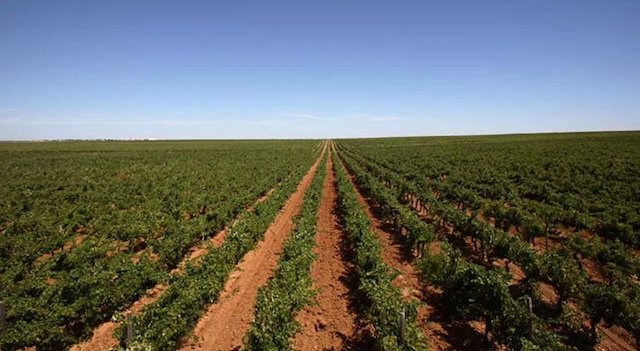
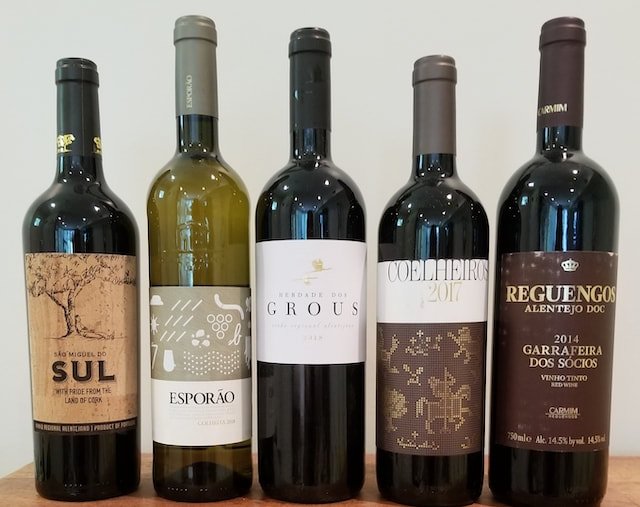
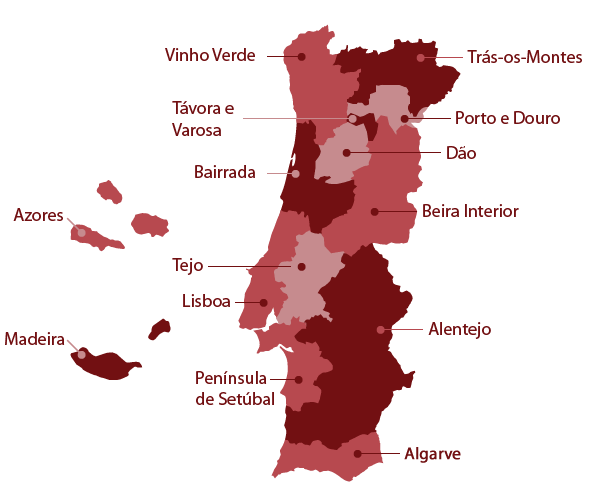
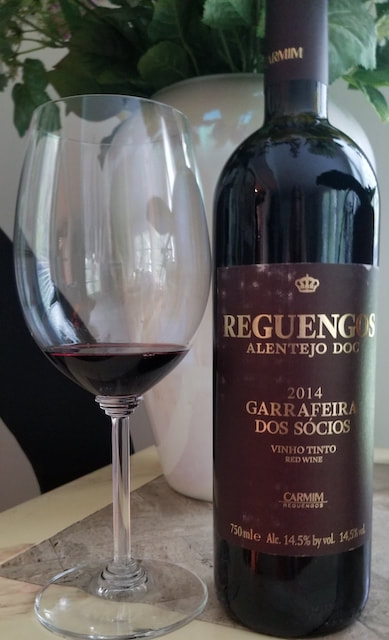
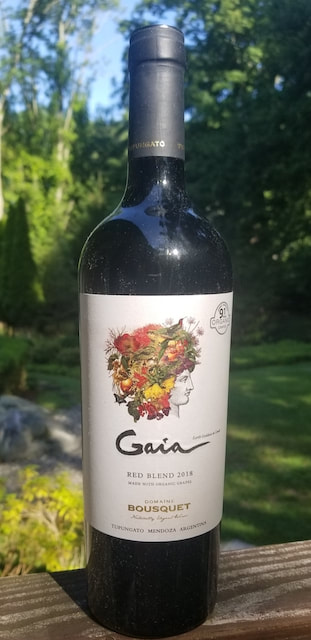
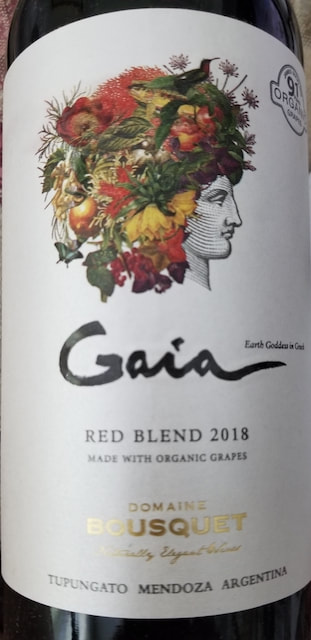
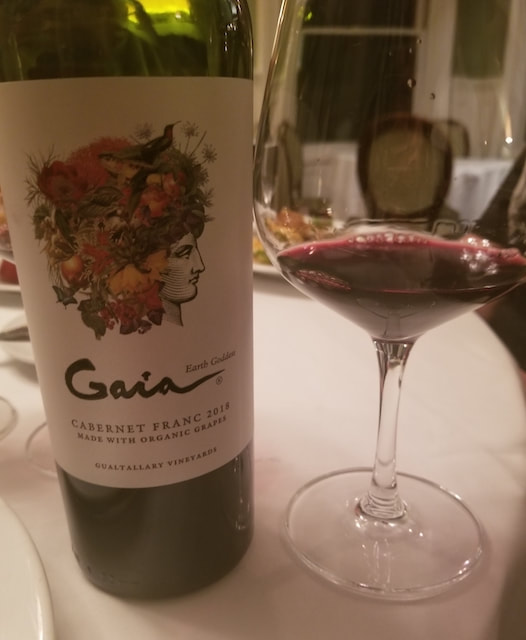
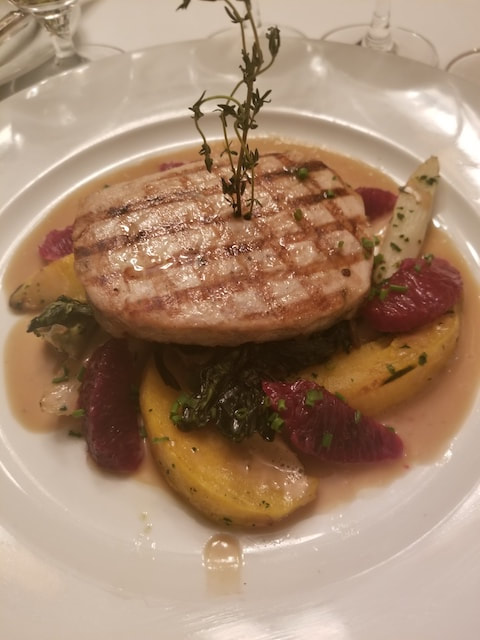
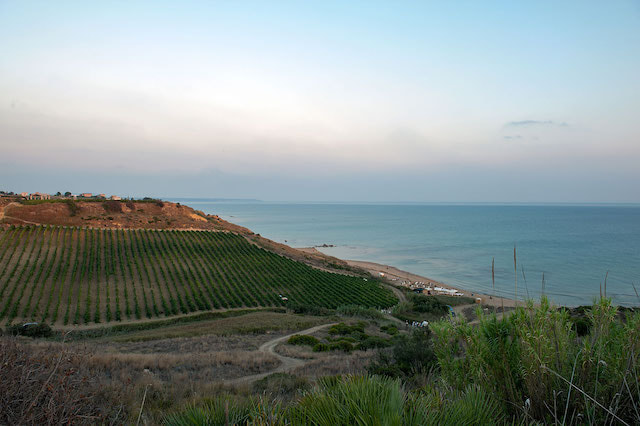
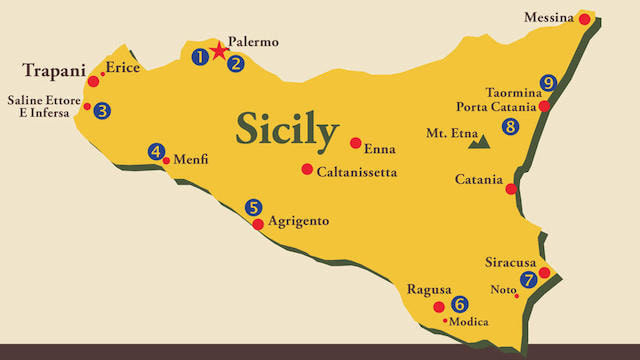
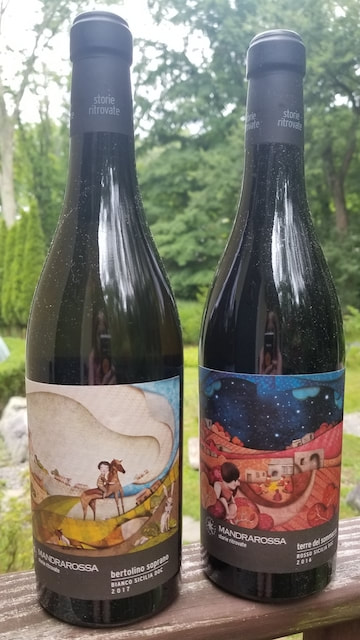
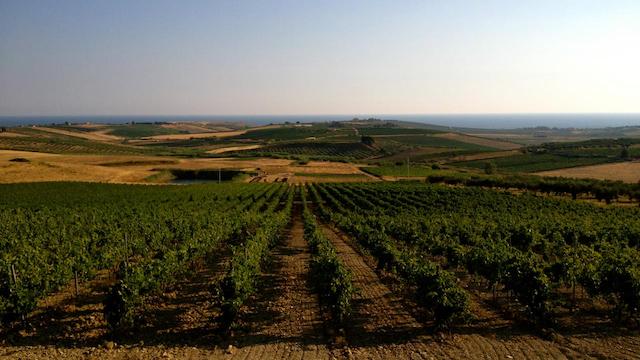
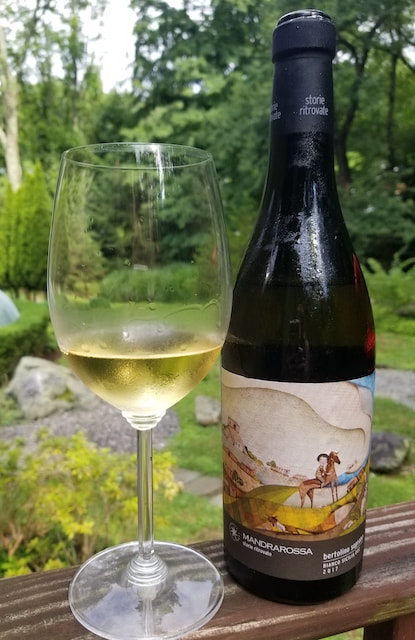
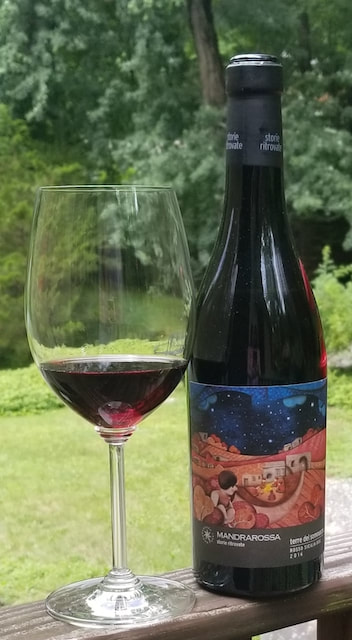
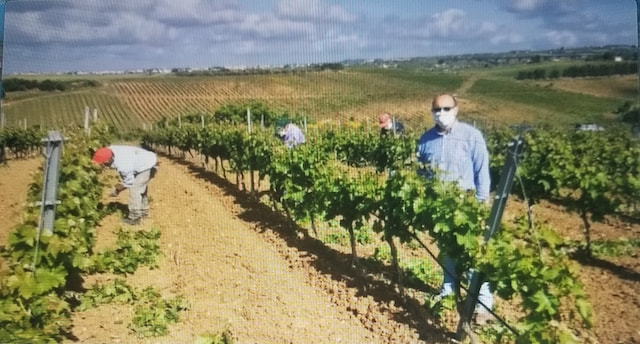
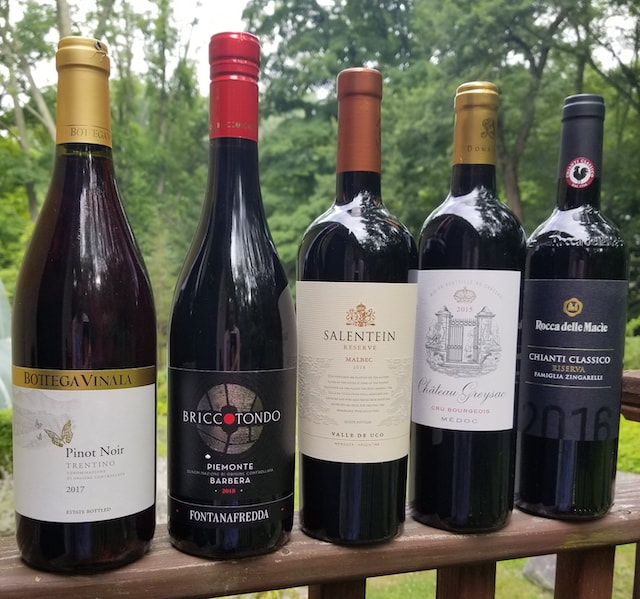
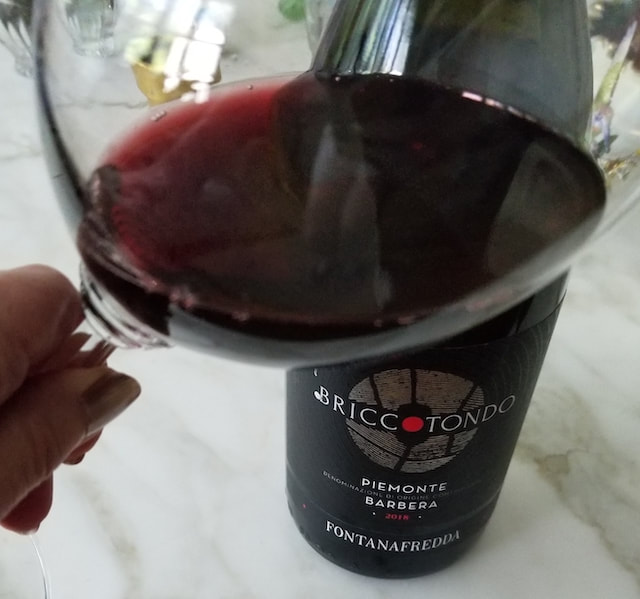
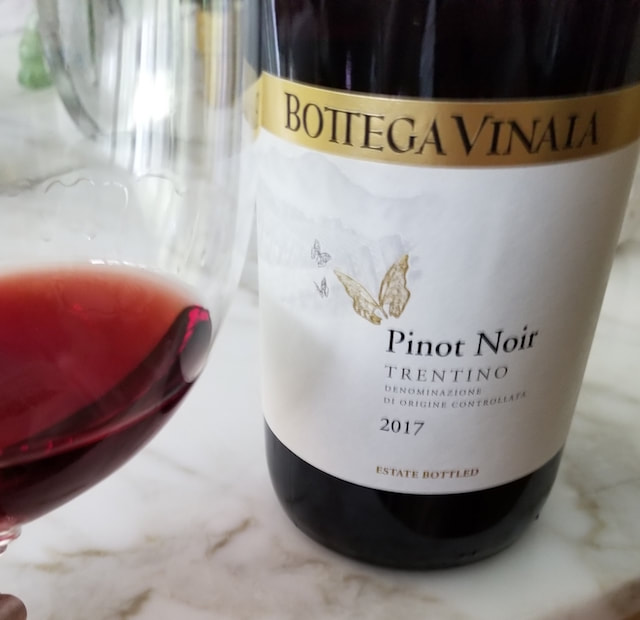
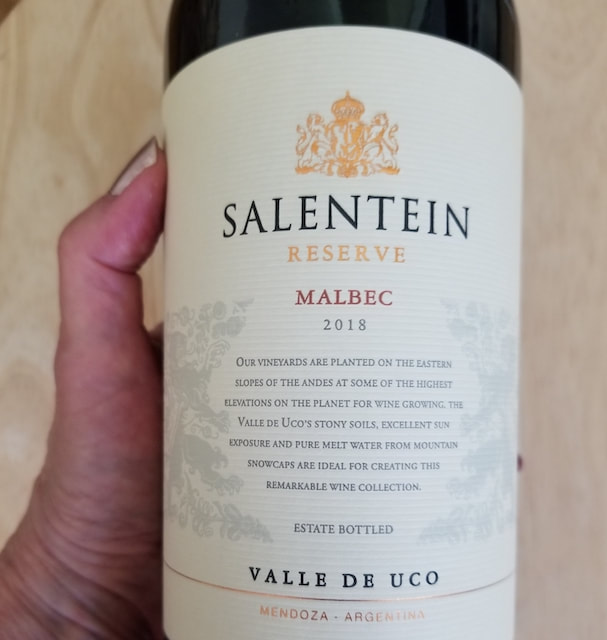
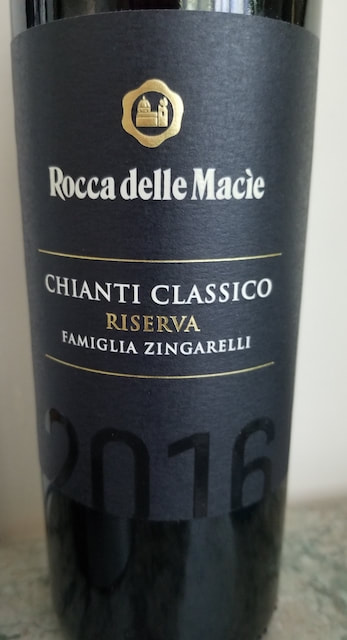
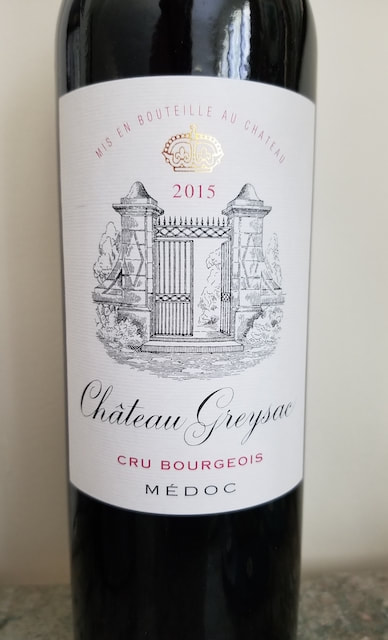
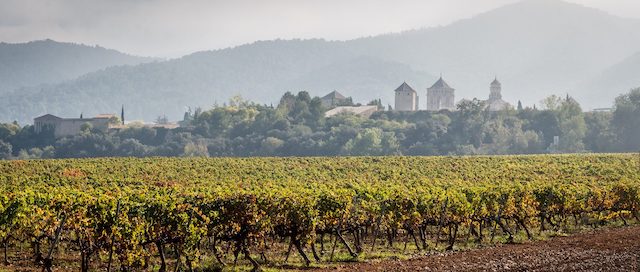
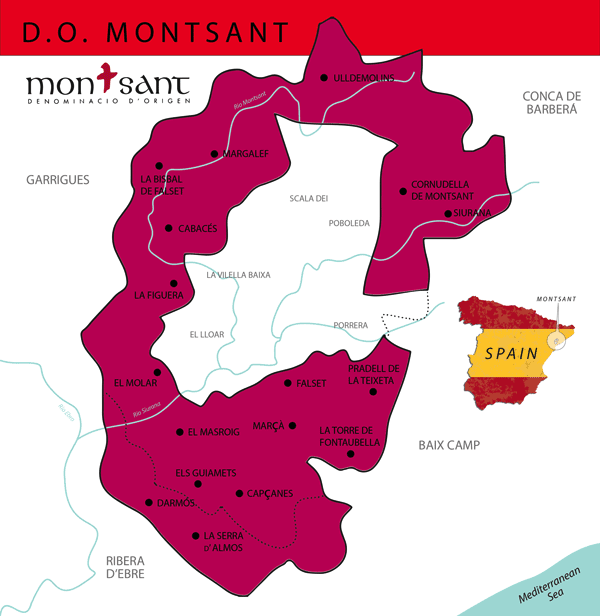
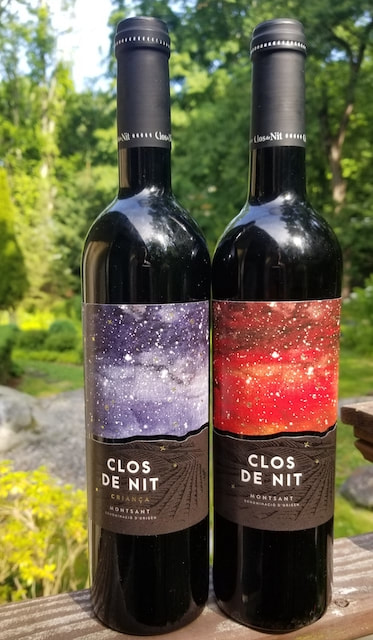
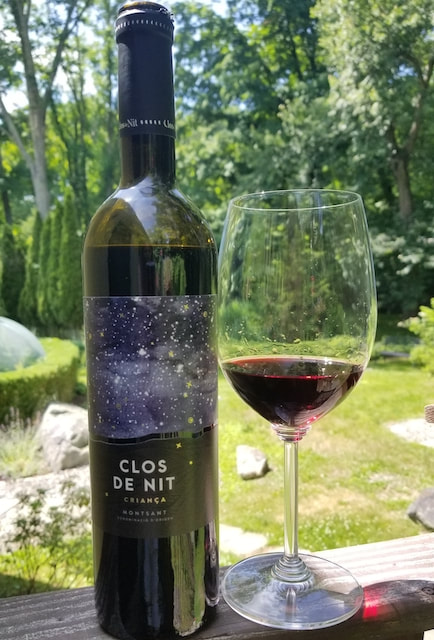
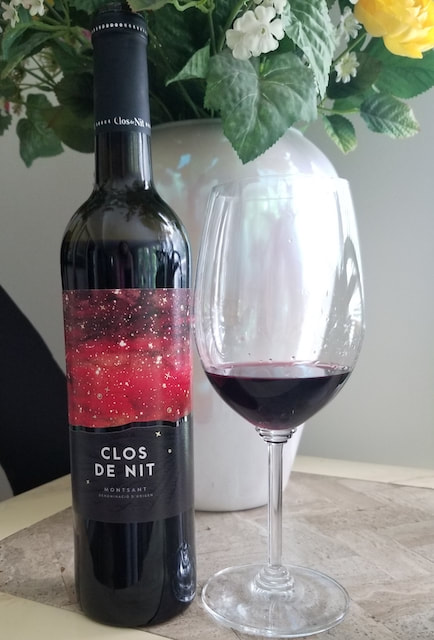
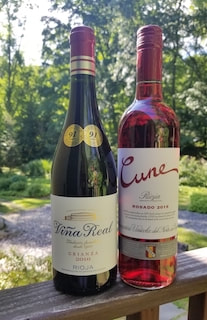
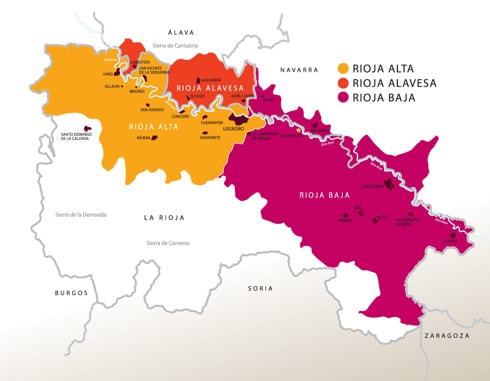
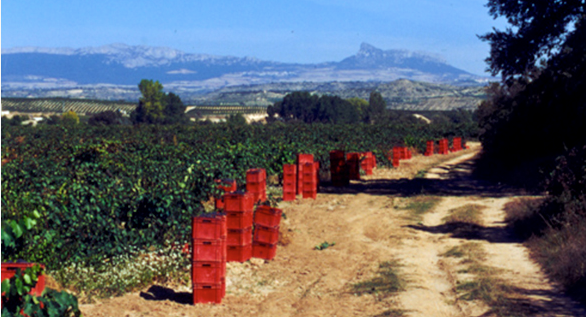
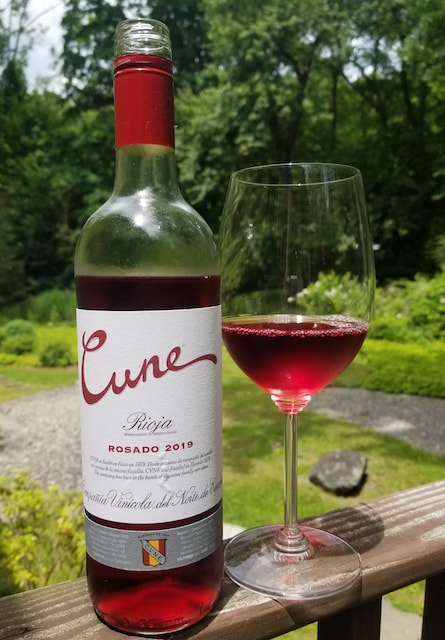
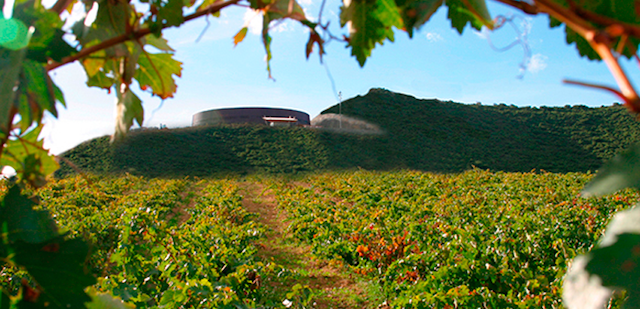
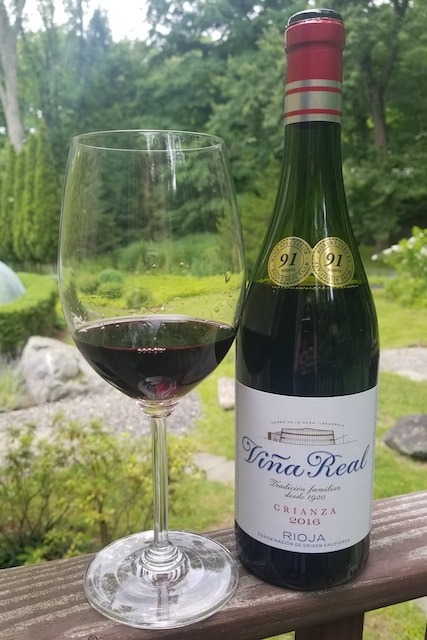
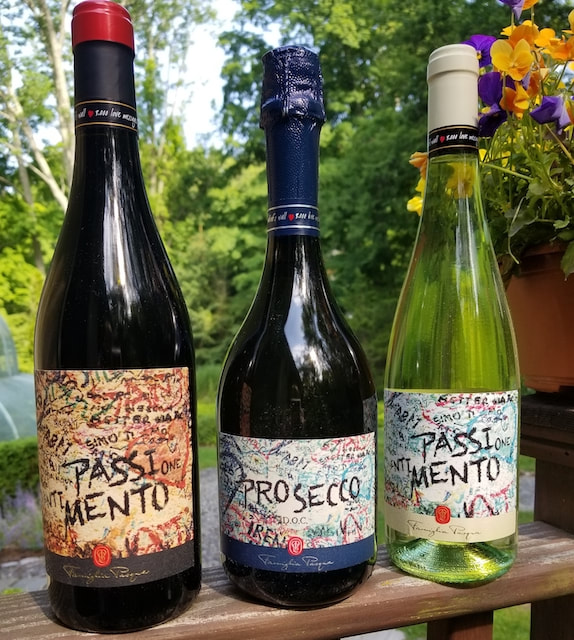
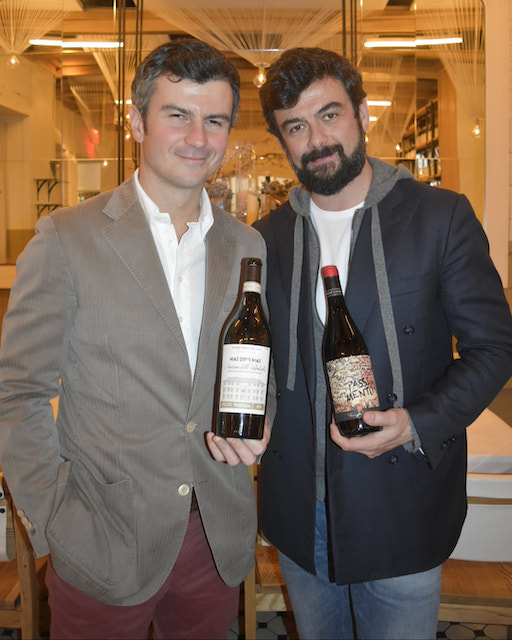
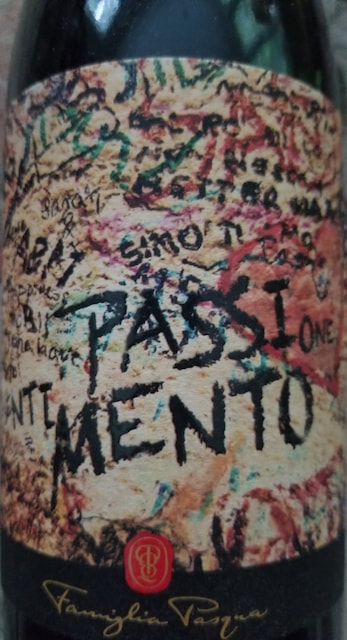
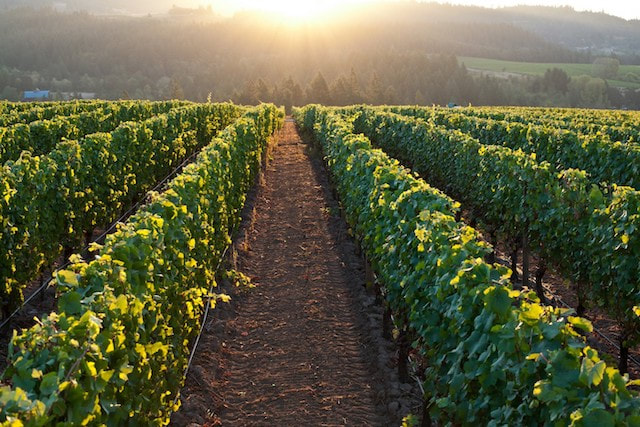
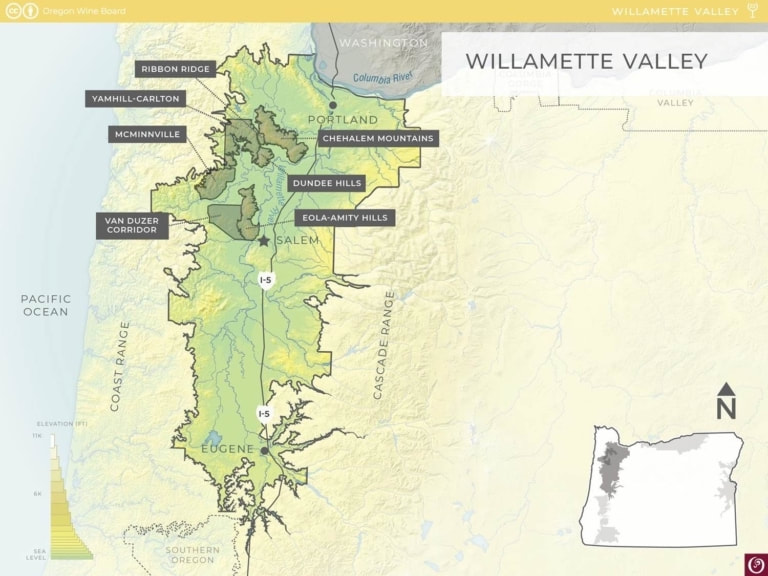
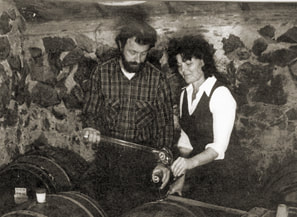
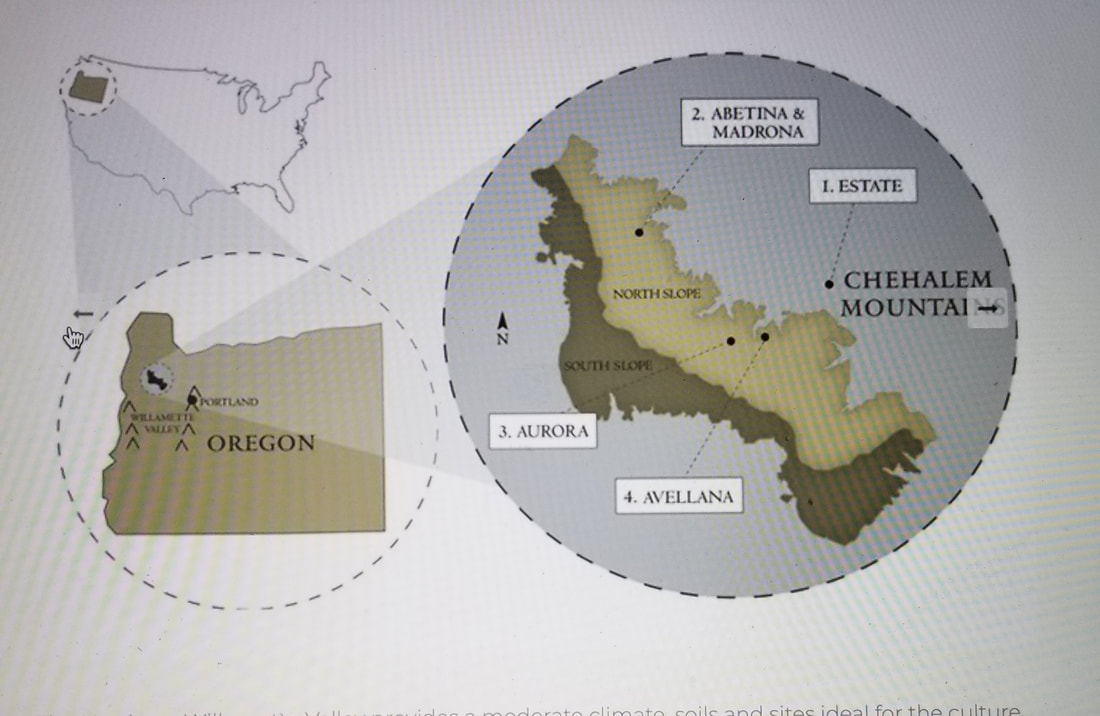
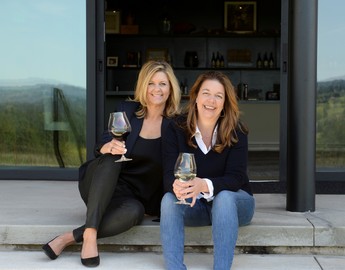

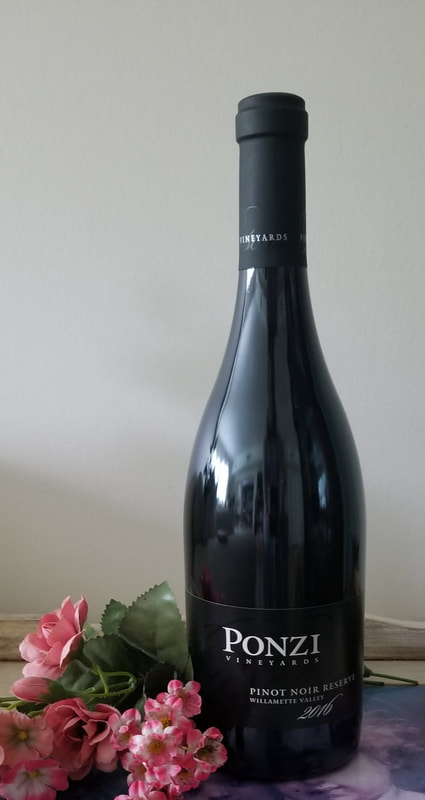
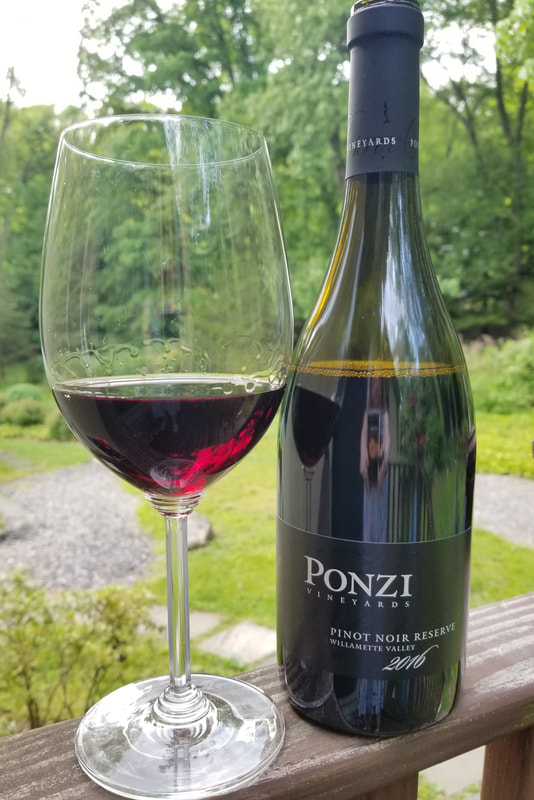
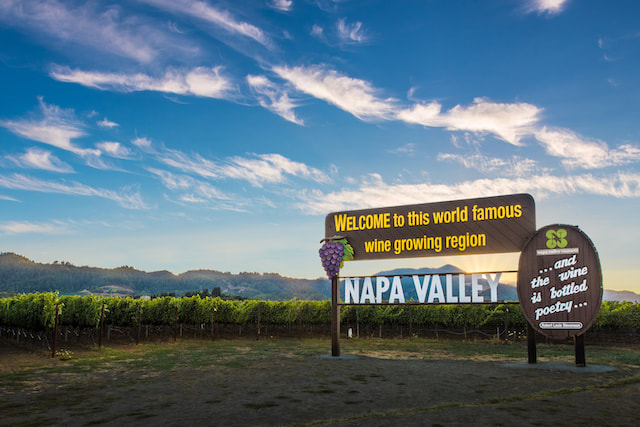
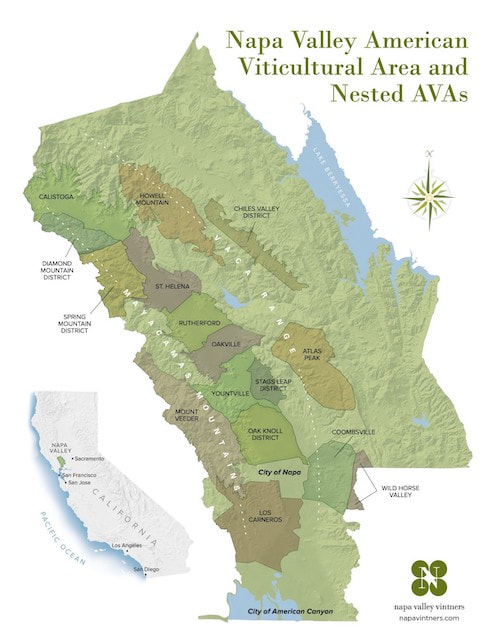
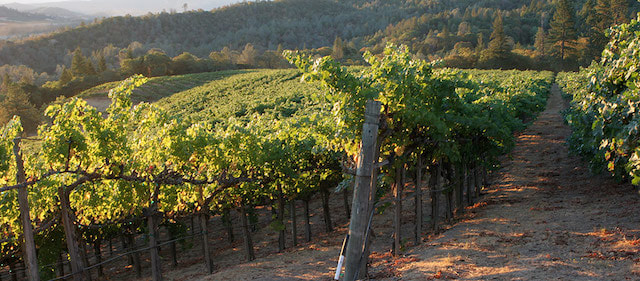
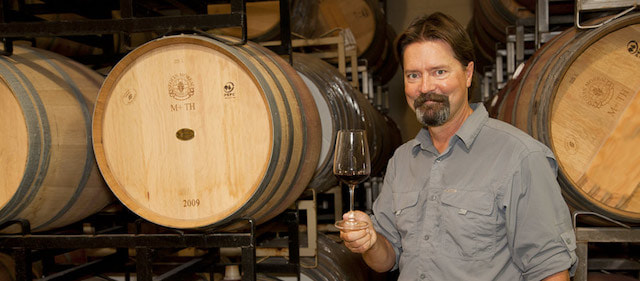
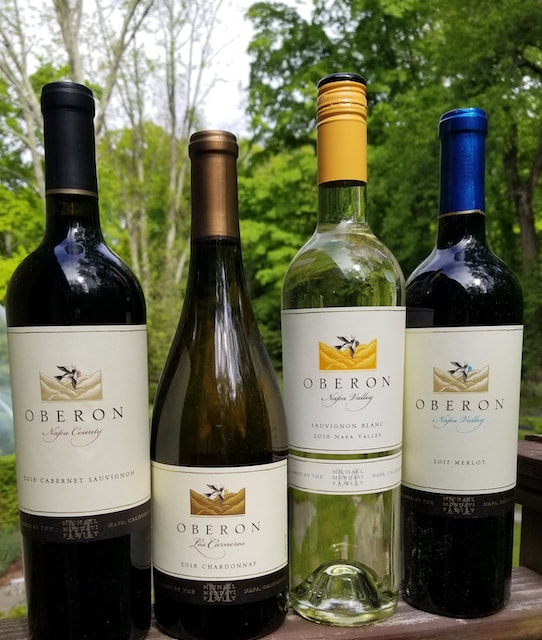
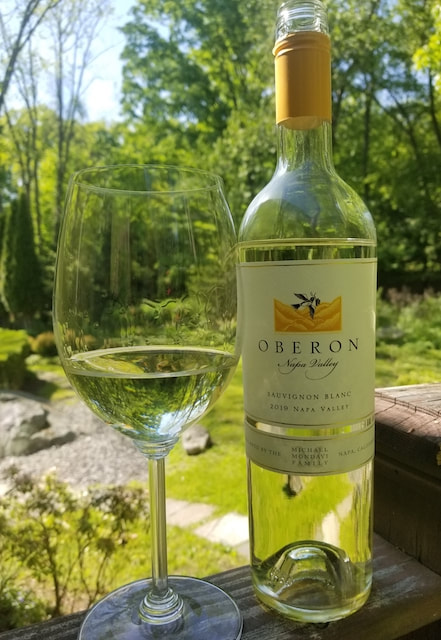
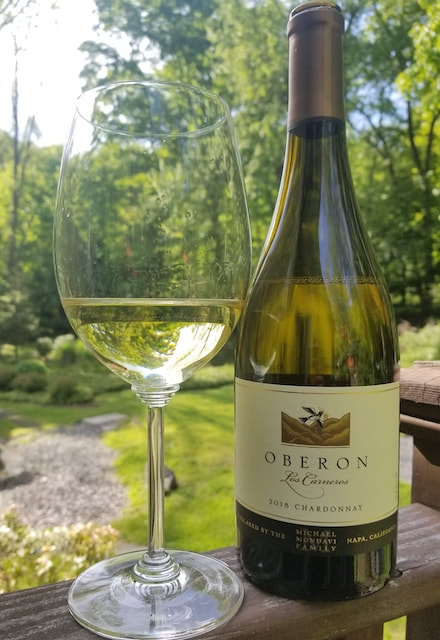
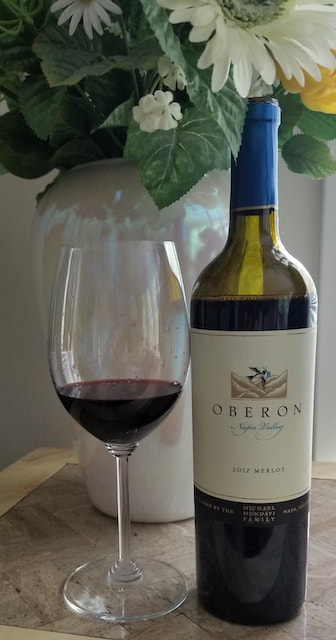
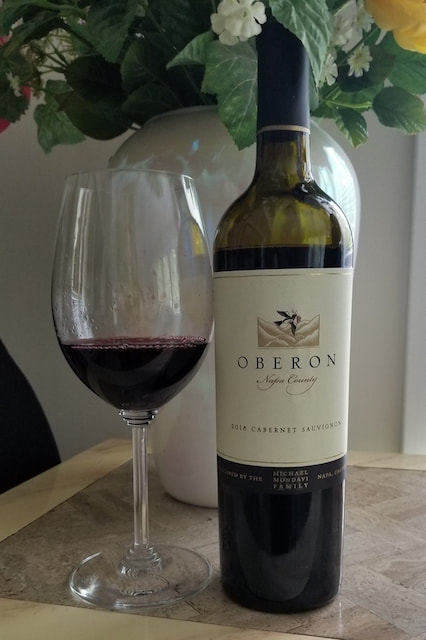
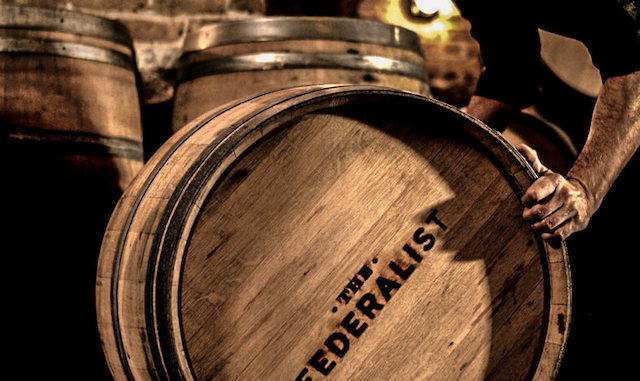
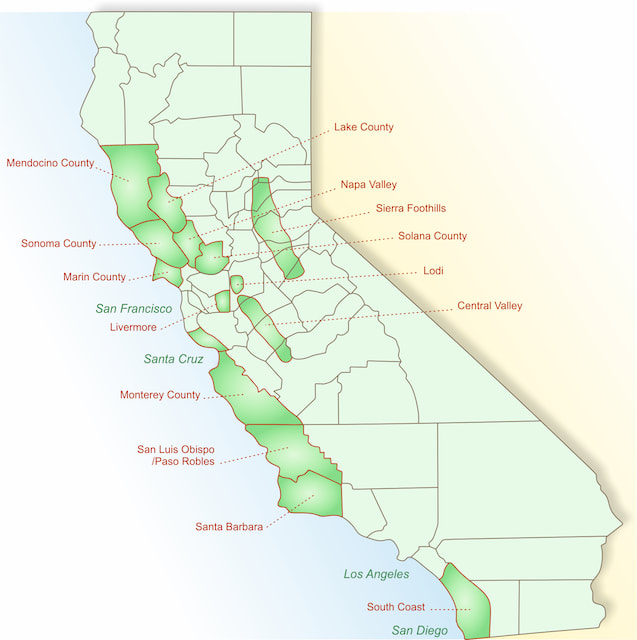
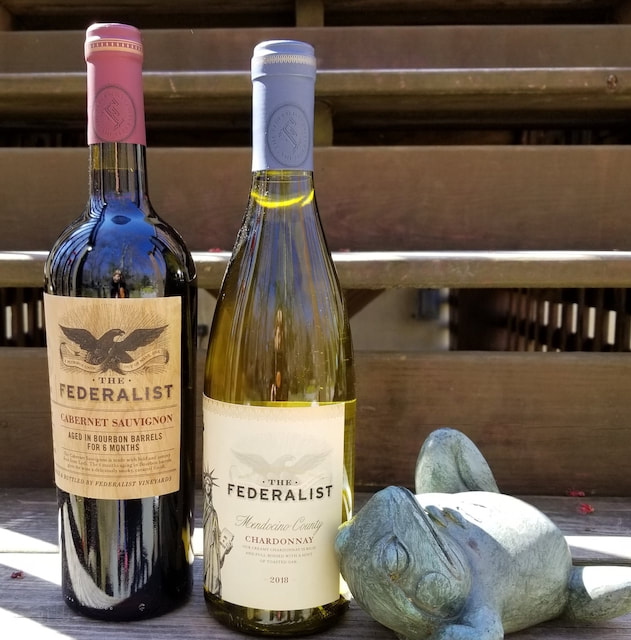
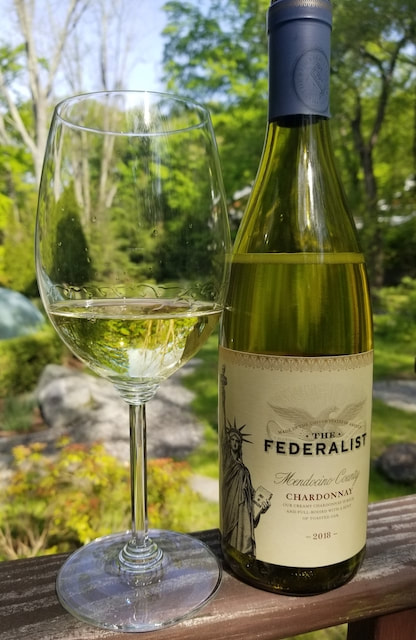
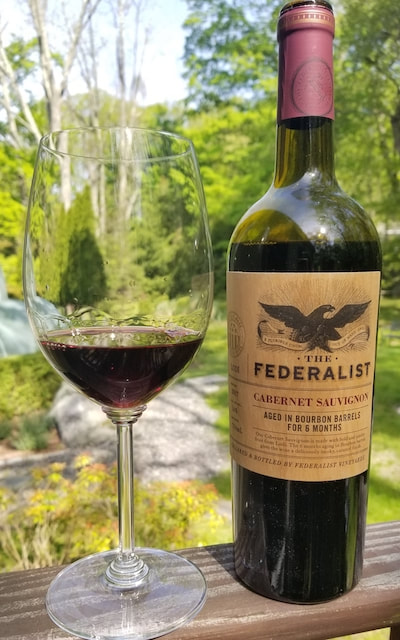
 RSS Feed
RSS Feed